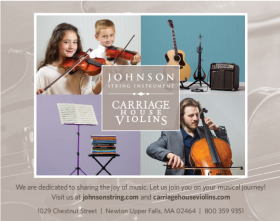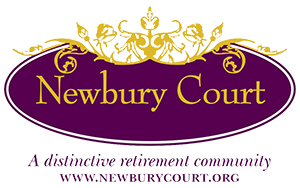Search
December 6, 2014, 3 pm, Emmanuel Church, Boston
December 7, 2014, 3 pm, Worcester Historical Museum, Worcester
The Worcester performance is dedicated to the memory of William Vogel,
friend and supporter of Musicians of the Old Post Road.
Sinfonia Pastorella Bernhard Hupfeld (1717-1796)
Allegro molto presto • Larghetto
Minuetto • Presto
Ein’ Magd, ein’ Dienerin Aria pro Adventu, H. XXIIId:1 Joseph Haydn (1732-1809)
Siehe, ich verkündige euch große Freude Christian Gregor (1723-1801)
Die musikalische Schlittenfahrt (The Musical Sleigh Ride) Leopold Mozart (1719-1787)
Intrada • Sleigh Ride • The Young Lady shivering with Cold
The Ball begins (Menuett) • End of the Ball (rondo) • Sleigh Ride
Intermission
Weihnachtslied (Stille Nacht) Franz Gruber (1787-1863)
Ihr Himmel, taut herab Aria de Passione Domini et Adventu, MH 131 Michael Haydn (1737-1806)
Christmas Pastorella Gregor Joseph Werner (1693-1766)
Andante ma non troppo • Largo • Allegro assai
Exsultate, jubilate, K. 165 Wolfgang Amadeus Mozart (1756-1791)
Lianne Coble, soprano
Suzanne Stumpf and Wendy Rolfe, flutes; Sarah Darling and Jesse Irons, violins
Jason Fisher, viola; Daniel Ryan, cello; Michael Bahmann, organ
traversi by Martin Wenner, after Palanca
violins by anon. (possibly French) labeled Carlo Bergonzi, and by Victor LeCavalle, c. 1800
viola by Warren Ellison, Jericho, VT, 1995; cello by an anonymous Belgian maker, c. 1700
organ by John Bennett, after Baroque models
The Worcester performance is co-presented by the Worcester Historical Museum.
Program Notes
This program presents Classical-era music for the Christmas season from regions that are now part of Germany and Austria. The spirit of the season is captured not only in sublime vocal settings of liturgical texts for church services, but also in instrumental works that evoke the rustic, pastoral nature of both the Christmas story and of winter pastimes.
Bernhard Hupfeld was a violinist and composer of instrumental music active in some of the smaller courts of Germany including Barleburg and Waldeck. He was director of music at the University of Marburg from 1775 until his death in 1796. His orchestral compositions show the influence of the Mannheim School in their use of dramatic effects such as long crescendos and frequent dynamic contrasts. These “Mannheim crescendos” are a prominent feature of the outer fast movements of his Sinfonia Pastorella, while the Larghetto and trio of the Minuet display the rustic pastorella style in their imitation of the drones of shepherds’ bagpipes.
The arias of Joseph and Michael Haydn presented on this program represent a special form of liturgical music designed for early-morning devotions in honor of the Virgin Mary during the Advent season. With texts in German rather than Latin, these arias are more intimate in character and scoring than their composers’ more formal church compositions. Joseph Haydn’s Ein’ Magd, ein’ Dienerin was written between 1770-1775 for the chapel at the court in Eisenstadt. While appearing to be a standard da capo aria, it is actually a setting of three poetic strophes set in seven variations.
While the compositions of Joseph Haydn have overshadowed those of his younger brother Michael, the works of the latter were highly regarded in their time, and his church music was considered by many to be superior to his brother’s. Michael Haydn spent most of his career in Salzburg, first as Konzertmeister to the Archbishop of Salzburg, then as organist at Salzburg Cathedral. His aria Ihr Himmel, taut herab was composed with two alternative texts—one for Passiontide and one for Advent. This expansive and expressive work features an unusual obbligato part for organ that weaves in and out of the texture. Both the organ’s descending triplet motifs and the disjunct violin arpeggios seem evocative of the rain described in the text.
Christian Gregor was a composer for the Moravian congregation in Herrnhut, Germany. Like most Moravian musicians of this period, he devoted himself to music only part time, holding many other positions within the church. He was, however, among the most important of Moravian composers having edited and compiled the church’s hymnal in 1778. Many of his church compositions are preserved in the archives of the Moravian congregations in the U.S., including Siehe, ich verkündige euch große Freude, a joyful setting of the Christmas story from Luke 2:10.
Although chiefly remembered as the father and educator of W. A. Mozart, Leopold Mozart was a respected composer (especially of church music), author of an influential violin treatise, and deputy Kappelmeister to the Prince-Archbishop of Salzburg. His Musical Sleigh Ride was written around 1755. It is one of several colorful character pieces he composed, including the Peasant Wedding and the Toy Symphony, all of which were probably written for specific occasions. One of the work’s playful elements is the violins’ musical depiction of shivering in the cold.
Gregor Joseph Werner was an organist and composer who was serving as Kapellmeister at the Esterházy court when the young Joseph Haydn was hired in 1761. Although relations between the two were strained during that time, Haydn paid homage to the older composer in 1804 by arranging some of his fugues for string quartet. Though principally a composer of church music and oratorios, Werner also composed instrumental music, including several rustic pastorellas for the Christmas season. In Austria and central Europe, Christmas musical traditions were infused with rustic, folkloric styles. Werner’s Pastorella contains generous doses of florid melodies in thirds accompanied by droning pedal points that depict a boisterous, rustic peasant band.
Wolfgang Amadeus Mozart’s Exsultate, jubilate was written in January 1773 during Mozart’s third visit to Italy. It was written for the castrato Venanzio Rauzzini and first performed at the Theatins’ Church in Milan. The piece is in the genre of the Italian sacred solo motet, and similarly structured works by Hasse, Sacchini, and Jomelli may have served as models for Mozart. A later manuscript of this work, partially in the hand of Leopold Mozart, was discovered in 1978. This version was composed for inclusion in a mass at Holy Trinity Church in Salzburg in 1779. There are numerous differences between this and the Milan version. The Salzburg manuscript uses flutes instead of oboes and includes alternate texts relating to the Trinity and to the Nativity, making the motet appropriate for use during those feast days. These changes make this work a welcome addition to the Christmas repertory.
— © Daniel Ryan and Suzanne Stumpf











Daniel Ryan and Suzanne Stumpf, Artistic Directors
349 Boston Post Road, Weston, MA 02493
tel. (781) 466-6694
All content © Musicians of the Old Post Road
Privacy Policy
Terms & Conditions
